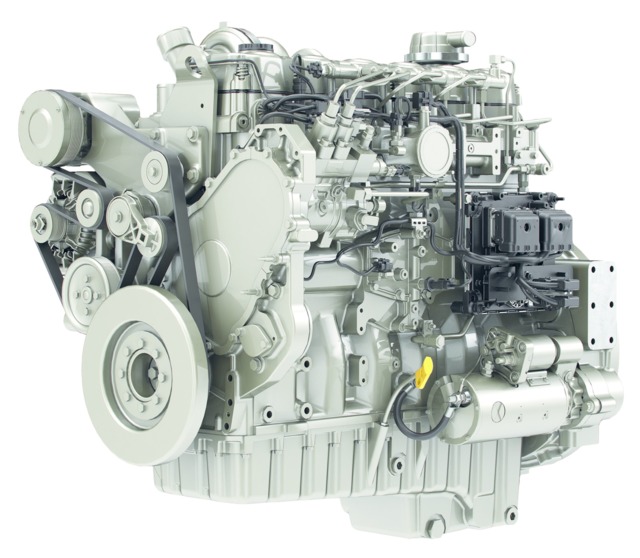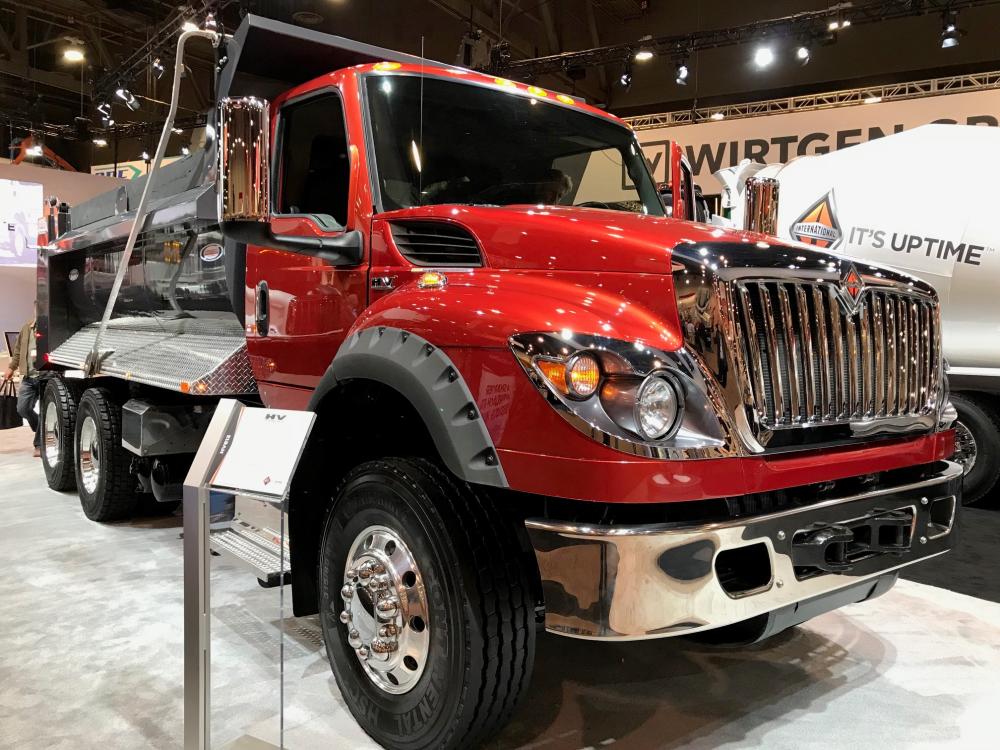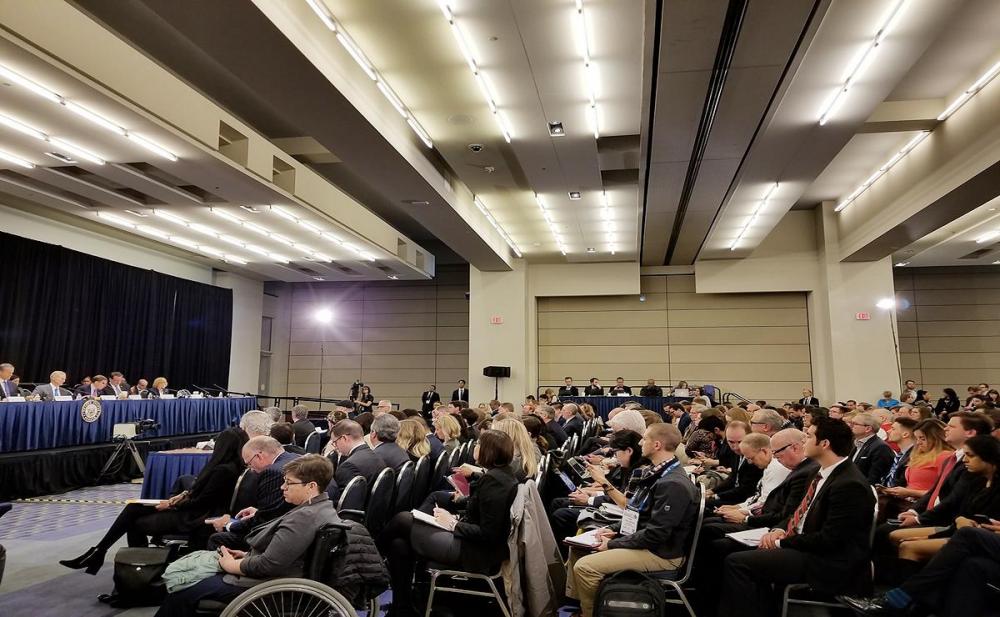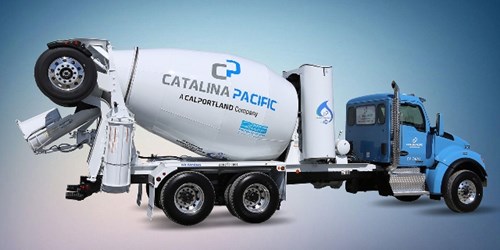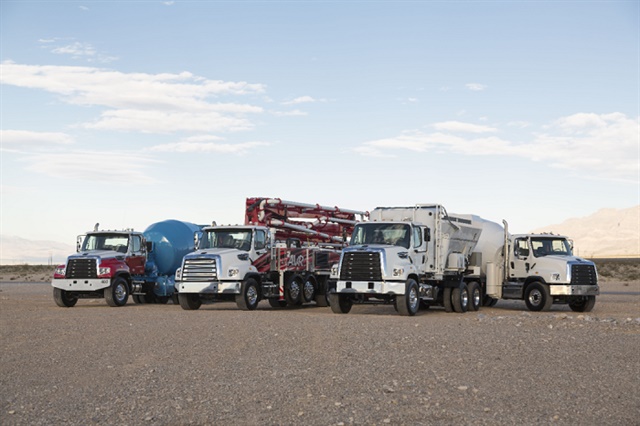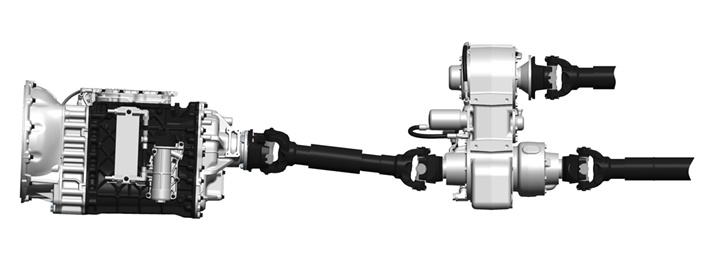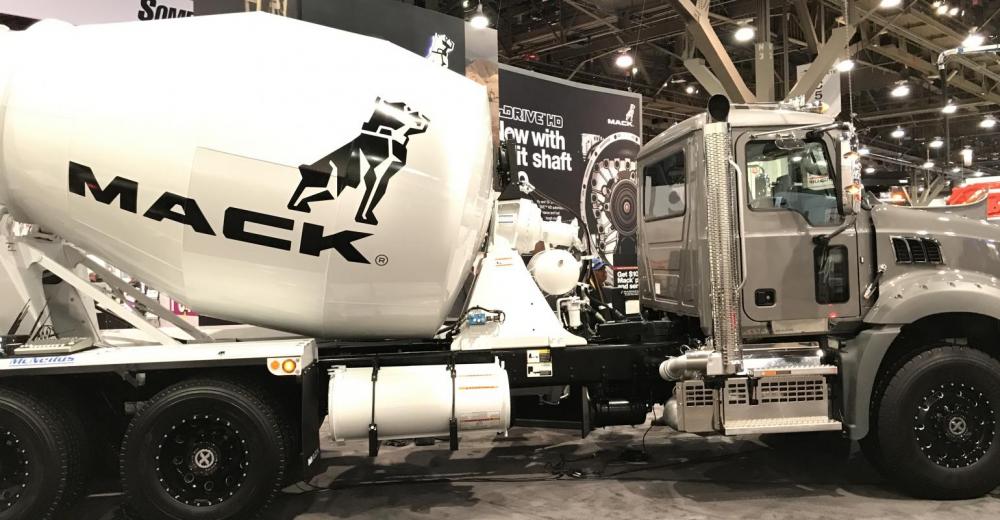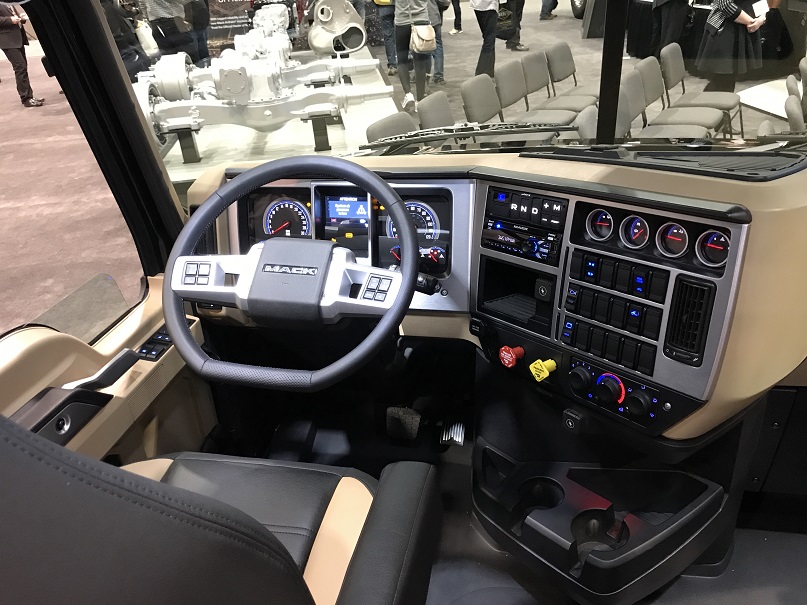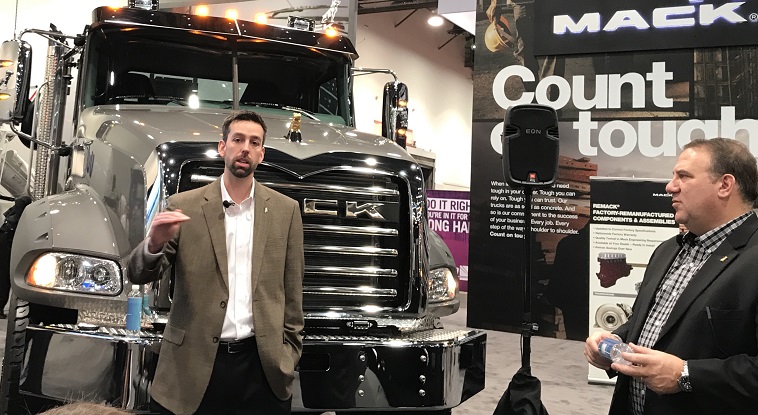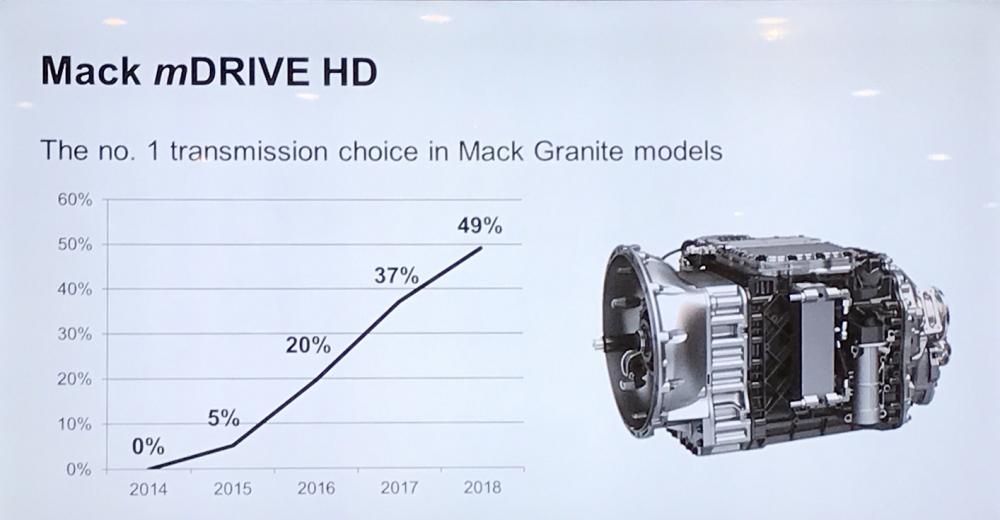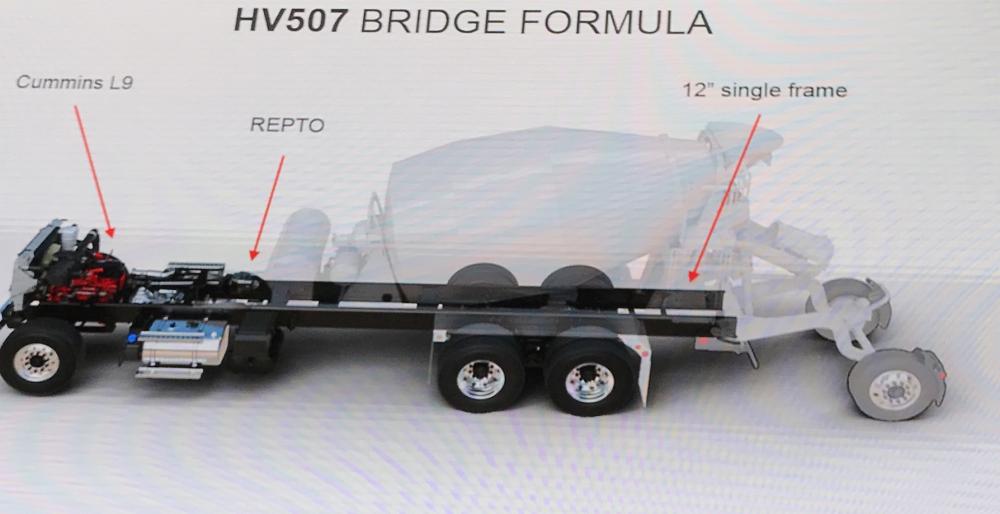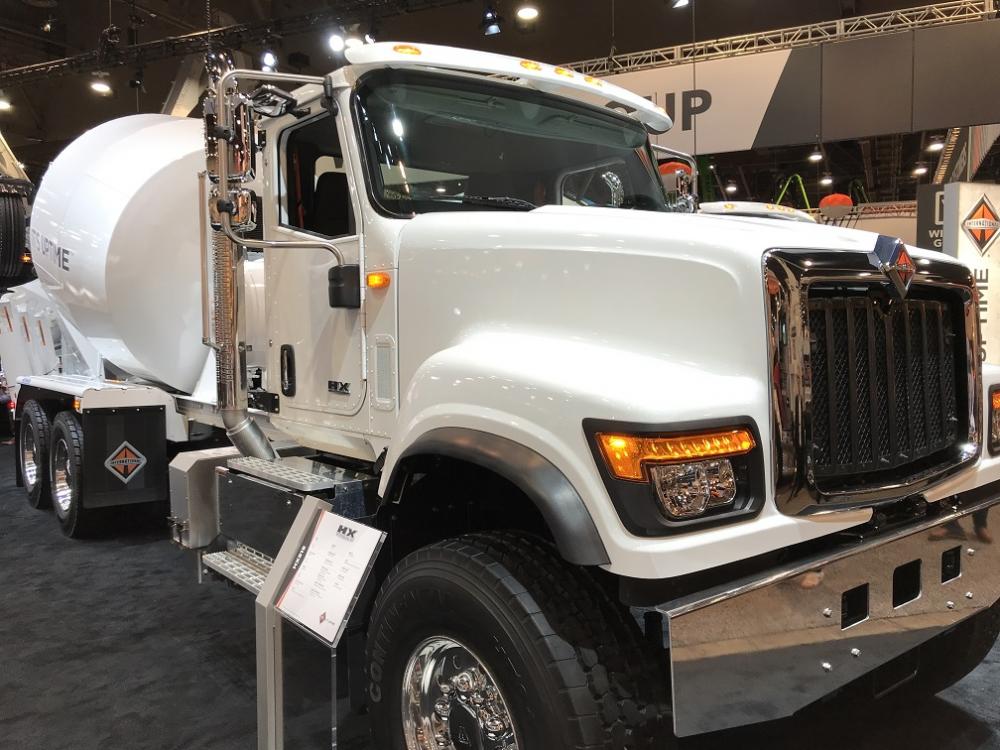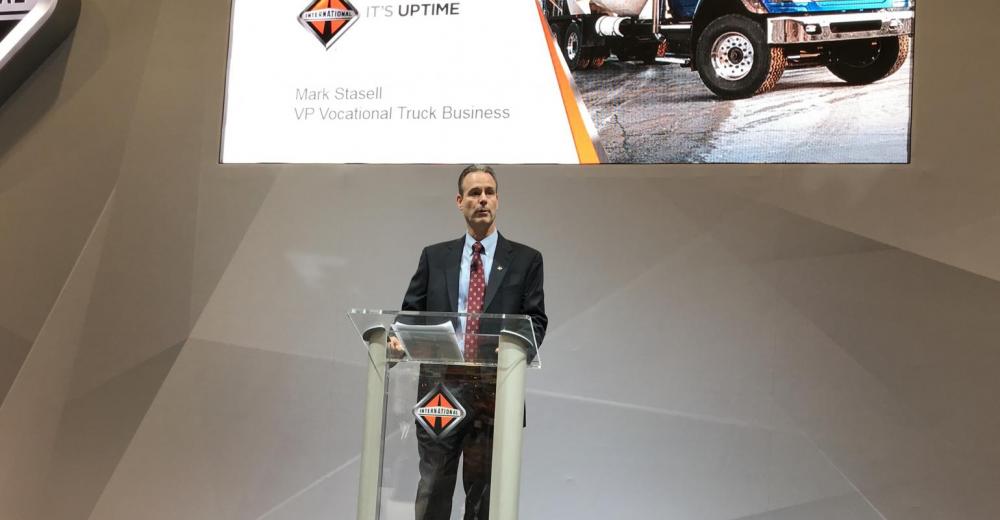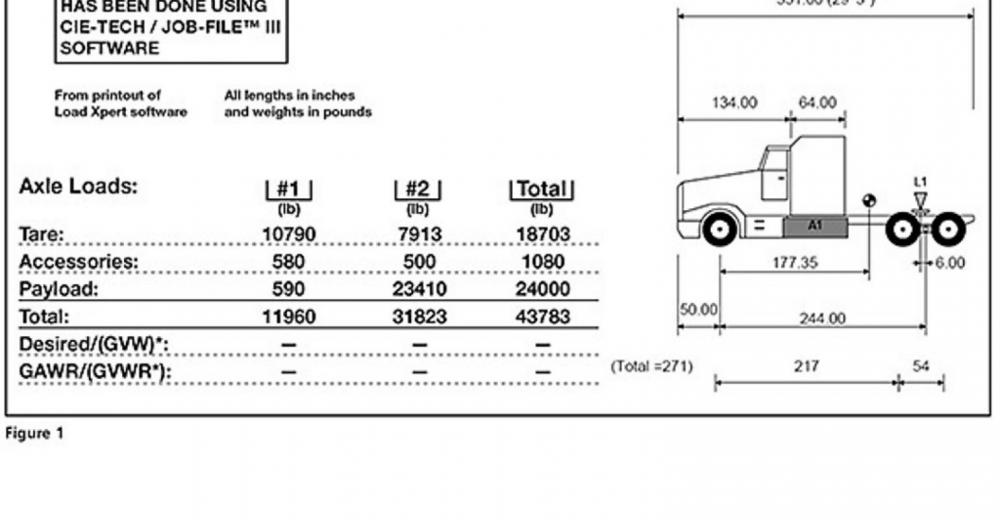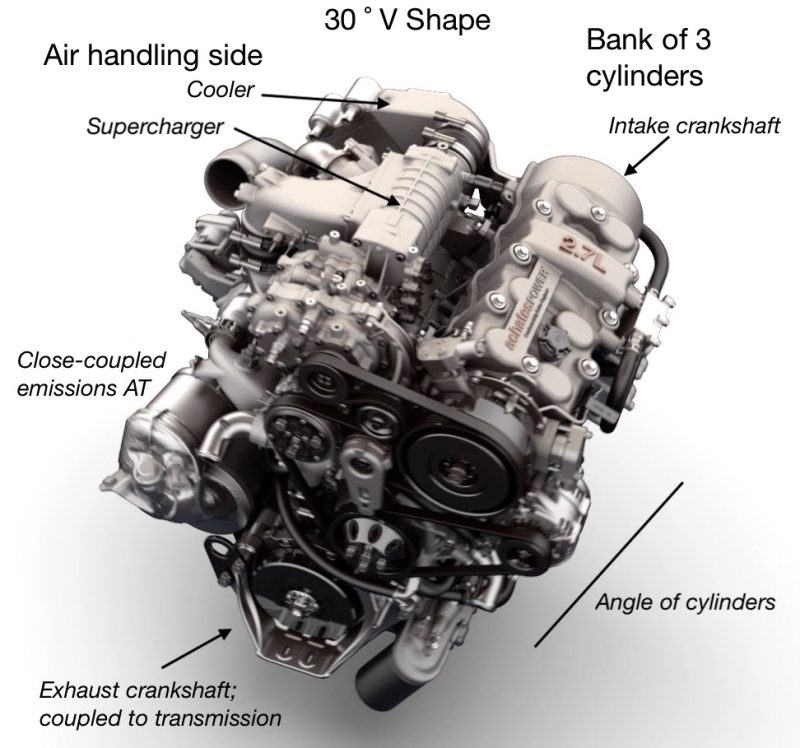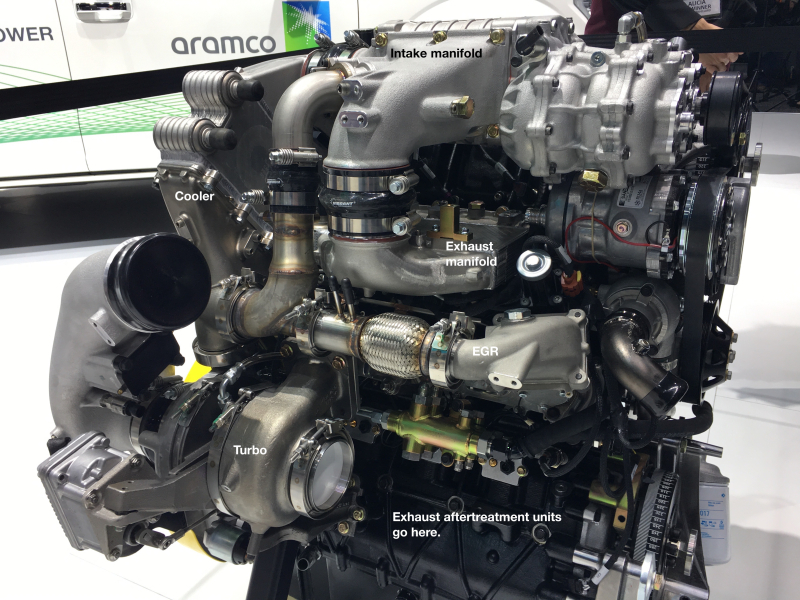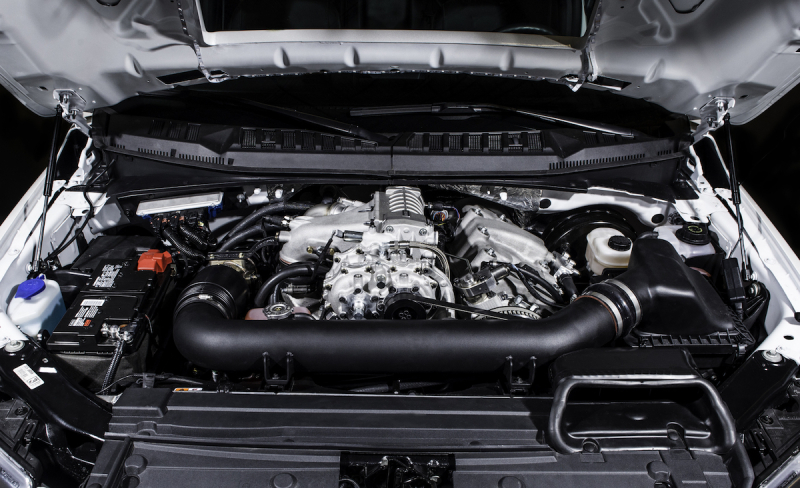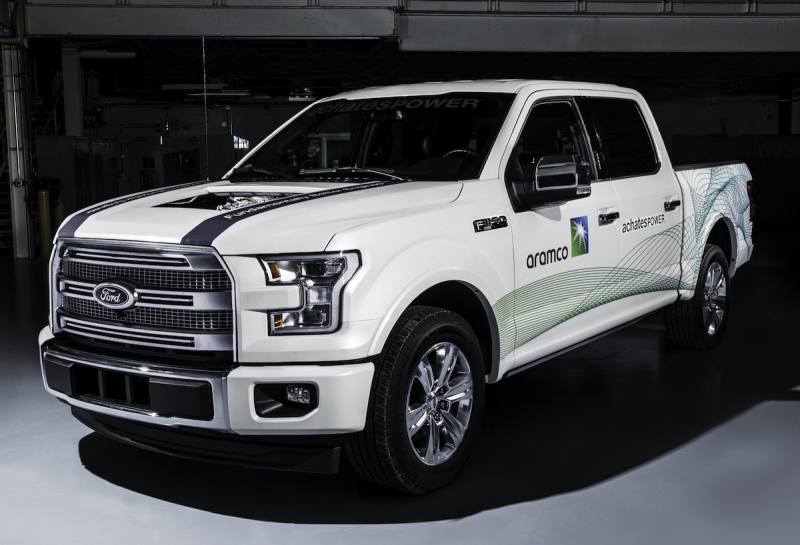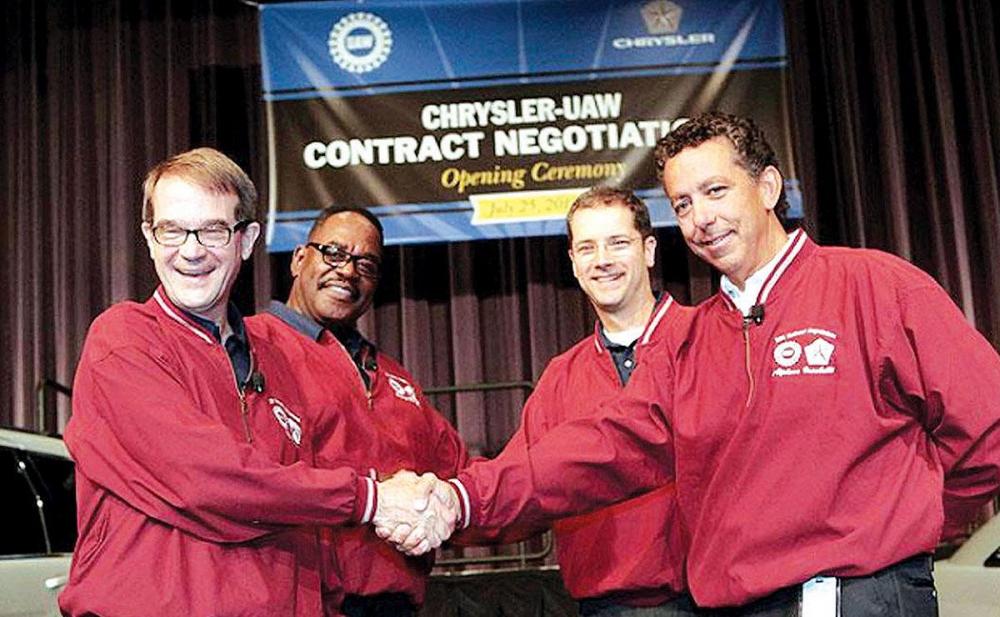
kscarbel2
Moderator-
Posts
17,893 -
Joined
-
Days Won
86
Content Type
Profiles
Forums
Gallery
Events
Blogs
BMT Wiki
Collections
Store
Everything posted by kscarbel2
-
ForConstructionPros / March 8, 2017 Engine offerings now reach to 800 hp Perkins has expanded its industrial engine range with the launch of four new product platforms. The 9-18 litre range enables construction equipment manufacturers to benefit from Perkins’ proven performance and engine durability up to 597 kW (800 hp). The addition of a 9 liter 1700 Series, a 13 liter 2200 Series, a 15 liter 2500 Series and an 18 liter 2800 Series, more than doubles the power range previously offered by Perkins, extending it to 8.2-597 kW (11-800 hp). From the compact 0.5 liter to the powerful 18 liter engines, equipment manufacturers can take advantage of Perkins’ comprehensive engine range. Andy Zuckerman, Americas Sales and Distribution Director, said: “We’ve developed a modular engine architecture which delivers the right performance, while enabling customers to develop single machine designs adaptable to multiple emissions standards. On show at ConExpo 2017, the 9.3 liter 1700 Series, is a six-cylinder turbocharged and aftercooled unit with direct injection and a fully electronic control system that will meet EU Stage V, U.S. EPA Tier 4 Final emission standards. With a power range of 250-340 kW (335-456 hp) it’s the ideal choice for construction applications. .
-
International Truck expands HV lineup for vocational sector
kscarbel2 replied to kscarbel2's topic in Trucking News
-
International Truck expands HV lineup for vocational sector
kscarbel2 replied to kscarbel2's topic in Trucking News
International introduces new vocational models, warranty packages James Menzies, Truck News / January 24, 2018 LAS VEGAS, Nev. – Navistar International has expanded its line of HV vocational trucks, and introduced additional warranty coverage for it’s A26 engine. The company introduced at World of Concrete new HV507 and HV607 models. The trucks feature a shorter 107-inch BBC configuration. The HV507 comes with a set-forward axle, while the 607 is a set-back axle configuration. The trucks are six inches shorter than the original HV launched at the North American Commercial Vehicle Show in Atlanta last fall. “They really complete this transition we have from our current WorkStar products to the current HV series,” said Mark Stasell, vice-president of International’s vocational truck business. International also announced greater support for its A26 engine. It is now extending the Customer Uptime Assurance program to its HX and HV vocational models. If a customer experiences a failure on an A26 engine within the two-year warranty period and the downtime exceeds 48 hours after diagnosis, the customer will receive a $250 gift card to be used towards future parts and service purchases. The program was initially available only on LT and RH models. International also extended the warranty on the A26 in HV and HX models, to four years or 100,000 miles. “Vocational customers don’t travel as many miles, and they wanted a longer period of coverage,” explained Stasell. The Vocational Confidence Warranty Package covers the powertrain, as well as emissions system. The plan is available on HV and HX models with the A26 engine, ordered before June 30. International also announced a new A26 Barrel Protection Plan, which will compensate customers if an A26 engine breakdown leads to concrete hardening in the barrel. International will cover the removal of the concrete or the replacement of the barrel, if necessary. The new plan covers the first four years of the truck. “We want to reassure our concrete customers that their time-sensitive deliveries will be on time, every time,” Stasell said. The protection plan applies to new International mixer trucks ordered by June 30. Stasell also said International’s new Uptime Command Center, which provides remote support to truck operators, now covers the HX and HV series vocational trucks. It initially supported only the LT and RH series trucks. Its mission is to have 80% of customer vehicles that encounter a problem back on the road within 24 hours, and 100% within 48 hours. The command center locates an available service bay, finds the nearest required parts, and expedites their delivery so the repair can be completed faster. “Our Uptime Command Center is live, and we’re keeping a close eye on the performance of your truck,” Stasell assured. . -
How many times have you heard a fleet operator, co-worker or neighbor say, "Boy, I wish that I could buy an autonomous vehicle. What's the hold up?" Virtually no one is asking for them, and yet major governments, interfering in business, are pushing for the arrival of autonomous vehicles ASAP. Why? The market certainly hasn't requested them. Is this a Bilderberg Group decision (the world's wealthy aristocrats who brought you the European Union and other success stories.....for the rich). With each passing year, the world's population grows. Government's allegedly strive to create jobs for the latest citizens entering their work force. And yet, they aim to eliminate the truck driver and millions of jobs.
-
Handful of Senate Democrats block progress on self-driving legislation Eric Kulisch, Automotive News / January 24, 2018 WASHINGTON -- Bipartisan legislation to promote safe development of autonomous vehicle technology remains stalled in the Senate over safety concerns from three Democrats, Commerce Committee Chairman John Thune said Wednesday. Proponents are looking for an expedited way to get the AV START Act through a crowded Senate calendar for a vote, but a "hold" placed on the bill by Sen. Dianne Feinstein, D-Calif., is preventing consideration by unanimous consent. California's senior senator has concerns about the overall safety of self-driving cars and whether the technology is ready to be placed on public roadways, said Thune, R-S.D. Sen. Richard Blumenthal, D-Conn., has expressed concern about the need to require a fallback mechanism for a driver to take control of a vehicle in case of software failure, while Sen. Edward Markey, D-Mass., is concerned about data privacy and cybersecurity as vehicles evolve into smart devices that can access a user's information for infotainment, shopping and other purposes. "A lot of testing is going on in her (Feinstein's) state, so I'm hoping folks will eventually be able to prevail on her to realize that this is eventually going to make roads safer, not less so," Thune told reporters after chairing a field hearing on self-driving cars held in conjunction with the Washington auto show. If all senators agree to support a piece of legislation, it can be adopted without a floor vote, but it only takes one objection to kill such a request and retain normal protections for the minority party. Thune said he has talked with Majority Leader Mitch McConnell about scheduling floor time for a vote or hitching autonomous vehicle legislation to, for example, a potential infrastructure bill. A stand-alone vote could require up to a week of Senate time to go through procedural steps, but the Senate's priorities in the next month include passing government funding and an immigration bill. Thune said he hopes to accommodate the issues raised by the three Democrats "as long as it doesn't move it too far into a more regulatory, sort of heavy government direction." The Senate bill notably bars states from imposing restrictions on autonomous vehicle safety performance and development, allows automakers to win tens of thousands of exemptions from safety rules that require human controls, and sets privacy requirements for disclosing how collected data is used. Automakers and tech companies will be required to regularly report how they are working to meet safety standards, but there are no specific mandates on how to do so. Industry supports the light regulatory touch, saying it is necessary to encourage investment in technology, while public-interest groups say the public is being put at risk without sufficient safeguards. "We think that NHTSA working with people who are designing these vehicles and understand these technologies are better equipped than us in Congress trying to prescribe a particular technology," Thune said. "They are in a better position to make those decisions in working with the regulators." Sen. Gary Peters, D-Mich., the lead Democrat crafting the bill, added: "The quicker we get this done the better because the faster we get the technology developed, the faster we start saving thousands of lives on our highways." Thune expressed hope that trucking would eventually be regulated for autonomous driving but acknowledged trucks would not be included in the current bill because of Democratic backing by labor unions, who fear robot trucks would cost commercial driving jobs. The House version of self-driving legislation also didn't address trucks because trucking is not under the jurisdiction of the Energy and Commerce Committee, which wrote the bill. "Eventually this has to be part of the overall equation. You can't have two safety standards out there on the highway," Thune said. "There's lots of support for this bill. We listened a lot to stakeholders, worked with trial lawyers on liability issues, and clarified state and federal roles. I think we've got it to a point where it's a good, balanced bill. So I don't know why we shouldn't be able to get this across the finish line," Thune said. .
-
Ford caps 'challenging year' with 19% decline in Q4 pretax profit Michael Martinez, Automotive News / January 24, 2018 DETROIT -- Ford Motor Co.’s fourth-quarter adjusted pretax profits fell 19 percent to $1.7 billion due to higher steel and aluminum prices, as well as adverse currency rates, the automaker said Wednesday. Ford's fourth-quarter operating margin was 3.7 percent, down 2 percentage points from a year earlier. Net income swung to a gain of $2.4 billion from a year-earlier loss of $800 million, reflecting a lower effective tax rate and pension re-measurement. The year-earlier loss had been due mainly to accounting changes. Revenue rose 6.7 percent to $41.3 billion. For the full year, Ford’s 2017 pretax profits fell 19 percent to $8.4 billion, slicing its operating profit margin to 5 percent from 6.7 percent in 2016. Those declines were caused by a $1.2 billion hit in raw materials costs and a $600 million negative impact from Brexit. Net income soared 65 percent to $7.6 billion, as revenue rose 3.3 percent to $156.8 billion. "It was a very challenging year, but also a year of progress," CFO Bob Shanks told reporters. "It's very, very clear we have to improve the fitness of the business." Ford shares were up 0.75 percent in after-hours trading to $12.05 as of 6:46 p.m. Eastern Time. N. America leads regions Ford's earnings were driven by its North American region, where pretax profits fell 16 percent to $1.6 billion in the fourth quarter, due to rising commodities and warranty costs plus expenses related to the launch of the Ford Expedition and Lincoln Navigator that Ford attributed to a supplier-related parts shortage that has since been fixed. The warranty costs include an October recall of 1.3 million F-150 and Super Duty pickups to fix faulty side-door latches that cost the automaker $267 million. Revenue in North America rose 4.3 percent to $24.1 billion. For the full year, pretax profits fell 16 percent to $7.5 billion in North America, even as revenue edged up 1 percent to $93.5 billion. As a result, Ford's roughly 54,000 UAW-represented employees will get profit sharing checks of $7,500 on average. That's down from the $9,000 they received last year. In Europe, Ford's pretax profit slid 66 percent to $56 million in the fourth quarter and tumbled 81 percent to $234 million for 2017. Most of the full-year drop was attributed to Brexit-related charges, as well as higher commodity and warranty costs. In South America, Ford's pretax loss narrowed to $197 million in the fourth quarter, from a loss of $293 million a year earlier. For 2017, its pretax loss in the region narrowed to $784 million, from a loss of $1.11 billion in 2016. In the Middle East and Africa, pretax losses narrowed slightly to $70 million in the fourth quarter from $71 million a year earlier, and to $263 million for the full year from $299 million a year earlier. Pretax profits at Ford's Asia Pacific business unit collapsed 98 percent, to $5 million in the fourth quarter from $284 million a year earlier, largely due to a sales drop in China. For the full year, pretax profits there slipped 11 percent to $561 million. Ford Motor Credit Corp.'s fourth-quarter pretax profit jumped 53 percent to $610 million, and its full-year pretax earnings rose 23 percent to $2.3 billion. 'Bad year' Ford last week lowered its 2018 forecast for what CEO Jim Hackett characterized as a "bad year." Its per-share guidance for 2018 translates to earnings of $8 billion to $9.2 billion, according to investment firm Barclays Capital, down from an initial forecast of $9.9 billion. Shanks, speaking last week, said the company will face about $1.6 billion in increased commodities costs, including steel and aluminum. Shanks said most of that impact will come from rising steel costs, and that aluminum represents just 25 percent of that negative impact. Ford’s crosstown rivals, including General Motors and Fiat Chrysler, have not highlighted commodities as a financial concern. Adding to the financial woes are the company's mobility investments, which were about a $300 million drag on earnings in 2017, the first year in which they've been broken out separately. Executives said mobility losses would be larger in 2018. Shanks said that Ford isn’t as fit as its peers, and that is stopping it from achieving its desired profit margins of around 8 percent. “We’re not able to get the same level of margins others may be able to,” Shanks said. “That shows the gap we need to address.” Executives have said that Ford has started to implement business practices that should begin to bear fruit in 2019 and beyond, focused around Hackett’s mantra of “smart vehicles for a smart world.” Those include $14 billion in costs cuts, simplifying orderable products, and tailoring its model lineup to higher-margin segments for different parts of the world. Said Shanks: “We’ve established our North Star.”
-
There was no market for a Mack baby 8. The distributor council was not asking for this product. It was, so to speak, dumped on them. Fast forward to recent years, you're right, we've seen Paccar, for example, capitalize on the baby 8 vocational market. People want a low price truck with heavy truck specs. You see them everywhere. (Volvo is the exception, having failed to gain any traction with its Mack brand Granite MHD offering). The CM never stood a chance because it was bizarre looking to American baby 8 customers. Unlike medium truck customers, they don't buy class 8 Mack trucks with French cabs and engines, and a convoluted appearance.
-
. . . . .
-
IVECO Trucks Press Release / January 19, 2018 Difficult mission? Yes, we can. Insurmountable obstacle? Yes, we can. Insuperable limit? Yes, we can. Yes we can, with the NEW TRAKKER, IVECO’s quarry and construction vehicle that redefines the meaning of impossible and enables you to work on impenetrable, broken terrain, and tackle constant stresses with extraordinary performance. .
-
Team PETRONAS De Rooy IVECO - Africa Eco Race 2018
kscarbel2 replied to kscarbel2's topic in Trucking News
. . . -
LAS VEGAS, Nev., January 23, 2018 - Two Kenworth T880S mixers and a T880 pumper are the featured construction trucks in the Kenworth Truck Co. booth (No. 6613) at the 2018 World of Concrete Show Jan. 23-26 at the Las Vegas Convention Center. The Kenworth T880S with set-forward front axle is the go-to configuration for mixer customers whose trucks need to meet the federal bridge formula. The first Kenworth T880S mixer, operated by CalPortland, is equipped with a 10.5-yard McNeilus Bridgemaster® mixer body that meets the federal bridge standard. The T880S is specified with a Cummins ISL G Near Zero engine rated at 320 hp and 1,000 ft-lb of torque, an Allison 4500RDS 6-speed automatic transmission, set-forward 20,000-pound front axle, and a 44,000-pound tandem rear axle. The second Kenworth T880S mixer, operated by Cemstone, is equipped with an 11-yard Con-Tech BridgeKing® mixer body. The T880S has a Cummins ISX12 engine rated at 335 hp and 1,450 ft-lb of torque, Allison 4500RDS 6-speed automatic transmission, set-forward 20,000-pound front axle, and a 46,000-pound tandem rear axle. The T880 in Kenworth’s booth features the innovative Putzmeister 38X-5-meter, truck-mounted concrete boom pump with five-section boom arms and pedestal for increased maneuverability, reduced overall weight and boom unfolding height, and more user-friendly design. The T880 is owned by Joseph A. Albanese Concrete Pumping. A PACCAR MX-11 will also be displayed in the Kenworth booth. For weight-sensitive applications, the 10.8-liter PACCAR MX-11 engine saves 400 pounds compared to a 13-liter engine, offers an impressive power to weight ratio, and low fuel consumption. The PACCAR MX-11, with up to 430-hp and 1,650 lb-ft of torque, is well-suited for ready-mix trucks. “The hallmark of the vocational flagship Kenworth T880 series is its excellent performance and productivity, low operating cost and outstanding driver comfort. Truck operators can depend on the T880 and T880S to get the job done in their specific vocational applications,” said Kurt Swihart, Kenworth marketing director. .
-
International Truck expands HV lineup for vocational sector
kscarbel2 replied to kscarbel2's topic in Trucking News
International Truck Unveils HV Series Mid-Range Diesel Trucks Heavy Duty Trucking (HDT) / January 23, 2018 International Truck rolled out its new International HV Series Mid-Range Diesel (MRD) HV507 and HV607 truck models at the World of Concrete show in Las Vegas. The two International HV Series models join the HV513 and HV613 severe-service vocational trucks launched at the North American Commercial Vehicle Show back in September. The HV507 and HV607 models are powered by a choice of the Cummins B6.7 or L9 engines and have a 107-inch BBC dimension, which makes them shorter than the HV513 and HV613 models they complement. The new HV507 and HV607 models are available to order now from International dealers with availability pegged for March. In addition, every HV Series can be equipped as an option with OnCommand Connection, the company's remote diagnostics system, and Over-the-air (OTA) programming. OTA, available through the nine-pin International LINK device, enables drivers or fleet managers to utilize a mobile interface to initiate authorized engine programming at the customer's facility over a safe, secure Wi-Fi Connection. The service offers drivers and fleets an easy, secure means of updating engine control modules to reflect the latest manufacturer-approved calibrations, without the necessity of visiting a dealer or other service facility. The International HV Series is suitable for numeous applications. Customers can order the specific chassis configuration needed for a given application up front, which can substantially reduce the time and expense involved to upfit the vehicle. To improve driver productivity and safety, the HV Series features Diamond Logic, an advanced electrical system that streamlines chassis and body equipment integration and allows customers to program automated tasks. -
Heavy Duty Trucking (HDT) / January 23, 2018 Freightliner Trucks is displaying the new Detroit DD8 diesel in a vocational model at the World of Concrete show in Las Vegas this week. The midrange-size engine is an alternative to the Cummins L9 and will be offered in the 108SD, such as the one at the show, as well as the 106SD and 114SD. The DD8, with ratings of 260 to 350 hp and 660 to 1,050 pound-feet, will be an alternative to Cummins’ L9, representatives said. The 7.7-liter DD8 is a larger, six-cylinder version of the four-cylinder DD5 introduced in 2016. Cummins’ L9 is an 8.9-liter diesel that has long been popular with weight-sensitive applications, especially concrete mixer chassis. “The DD8 engine combines the durability and efficiency expected from Detroit with the features best suited for vocational applications,” said Kelly Gedert, director of product marketing for Freightliner Trucks and Detroit Components.“As highlighted in in our World of Concrete booth, the DD8 is part of our overall strategy for having the right solution for any job.” The DD8 claims best-in-class maintenance intervals and is available with the engine and transmission power-take-off options needed for vocational applications, he saidThe DD8 display at World of Concrete includes Detroit’s variable cam-phasing for efficient aftertreatment performance. The engine is installed in the Freightliner 108SD set-back axle chassis with a ProAll volumetric mixer truck.Like the L9, the DD8 weighs hundreds of pounds less than larger-bore diesels, adding to a truck’s payload. The DD* will be priced similar to the L9, representatives said.The display truck’s transmission is an Allison 3000 RDS automatic, a midrange series unit that costs considerably less than 4000 series Allisons required for larger, higher-output engines. .
-
Heavy Duty Trucking / January 23, 2018 At the World of Concrete show in Las Vegas, Mack Trucks introduced a new split-shaft functionality for its Mack mDrive HD automated transmission, giving customers with high-demand power take-off needs a fully integrated solution. Split-shaft PTOs are mounted in the middle of the driveline to receive input directly from the transmission, supplying more torque for auxiliary equipment such as concrete pumps, vacuum body or high-pressure liquid transfer applications. While the split-shaft PTO is engaged, power to the axles is disconnected. The split-shaft functionality is standard on all 12-,13-, and 14-speed mDrive HD AMTs and can be activated by a Mack dealer. Additionally, all F-Series mDrive HD AMTs can be reprogrammed with split-shaft functionality with assistance from the Mack Body Builder Support Group. The functionality allows transmissions to start in 7th through 12th gears and shift to a desired continuous operation gear of 11th or 12th. Mack has also launched Mack Trucks Configurator, an online tool that allows customers to build and customize Mack Granite and Granite HD models. “The Mack Trucks Configurator presents customers with recommended specs for seven Granite applications, plus six more for the Granite MHD,” said Tim Wrinkle, Mack construction product manager. “Customers can then tailor several spec options to create a truck that best fits their specific needs.” Once complete, customers have the option to send the configuration to their local Mack dealer for additional information and quoting. The shared configuration is also streamlined with Mack’s sales quote and ordering system, allowing customers to easily receive a quote on a new Mack Granite or Granite MHD model quicker than ever. Mack also announced a new loyalty reward program for National Ready Mixed Concrete Association members who purchase Mack Granite models. The Let’s Build! Mack Trucks Parts and Service Loyalty Reward Program offers NRMCA members a $1,000 parts and service reward for Mack Granite models purchased between Jan. 12, 2018 through June 30, 2018. Customers are eligible to receive the reward for up to 10 Granite models at participating Mack dealers. “It’s good news for our construction customers that the industry is continuing to expand, and we wanted to reward them with yet another benefit to doing business with Mack Trucks,” said Jonathan Randall, Mack Trucks senior vice president of sales and marketing. “Customers require ongoing support once they purchase a vehicle, and this loyalty reward program enables them to improve their ROI by saving money on Mack Granite parts and service.” .
-
Neil Abt, Fleet Owner / January 23, 2018 LAS VEGAS. Just three weeks into 2018, Mack Trucks said the year is off to a strong start. Jonathan Randall, senior vice president for North American sales, said positive signals on housing starts and construction spending should translate into higher truck sales. He spoke at a press conference during the World of Concrete show, where Mack displayed upgrades to its Granite model, the most popular heavy-duty conventional straight truck in the United States. Mack is projecting North American Class 8 retail sales totaling 260,000 in 2018, a figure Randall said faces “significant upward pressure.” He added Mack is scheduled to begin full production of its Anthem highway tractor next week, as well as the updated interior for the Pinnacle and Granite models. The all-new interior features the industry’s first flat-bottom steering wheel, new gauge cluster and dash layout, and ergonomic seats developed in partnerships with Sears. Roy Horton, director of product strategy, said Mack's mDrive had become the top transmission choice among Granite customers. About 50% of Granite orders include the mDrive, up from 5% in 2015. Tim Wrinkle, Mack’s construction project manager, highlighted the additional lighting that has been added to the doors of the Granite, which assists drivers more safely maneuver in the dark. “A whole lot of work is done before the sun comes up,” he said. The company displayed the recently launched Mack Trucks Configurator was on displayed at the company’s booth at World of Concrete. The online tool enables customers to build and customize Granite models to determine the best specifications for their needs. Once the entire vehicle is configured, customers can send the information to a local dealer for quoting. Mack also introduced new split-shaft functionality for its mDRIVE HD automated manual transmission. Wrinkle said it gives customers with high-demand power take off (PTO) needs a fully integrated solution. Split-shaft PTOs are mounted in the middle of the driveline to receive output directly from the transmission, supplying more torque for equipment such as large concrete pumps. While the split-shaft PTO is engaged, power to the axles is disconnected. Additionally, Mack announced a new loyalty reward program for National Ready Mixed Concrete Association members who purchase Mack Granite models by June 30. Finally, the company said it donated a 2018 Granite axle back model to support the Concrete Industry Management auction. .
-
Fleet Owner / January 23, 2018 LAS VEGAS. International Truck has unveiled new HV mid-range diesel models, as well as a bridge formula truck for the concrete industry. "The HV Series raises the bar for vocational trucks and it is designed to meet the grueling demands of vocational applications," said Mark Stasell, vice president of vocational truck business for Navistar Inc. The debut of the HV507 and HV607 models took place at the World of Concrete show. The initial HV models were introduced last September, and are six inches longer than the new models. They can be ordered with an International A26 or Cummins engine. International also introduced the HV507 bridge formula model. The chassis includes a set forward front axle, and a rear-engine power take off (REPTO) suited for vocational applications, especially concrete placement. Every HV truck can be equipped with OnCommand Connection as an option. The HV series features redesigned cab doors with a lower bottom glass edge, mirrors that require less heading turning by drivers, and an all-new dash. The company also announced additional assurance programs. They are part of the ongoing “Uptime” message that is aimed at putting additional distance between the company and the engine issues they suffered through at the start of the decade. Under the A26 engine assurance program for vocational models, if a customer experiences a warrantable failure within its two-year warranty period, and faces downtime greater than 48 hours, they will receive a $250 card for future parts and service purchases at an International dealership. A new vocational confidence warranty package offers powertrain coverage for HX and HV models with the A26 engine ordered by June 30. The four-year, 100,000-mile warranty offers total powertrain and drivetrain coverage. Another new program states that if a customer experiences an A26 warrantable failure resulting in barrel damage, International will cover that damage for the truck’s first four years in service. "Bottom line, we are positive that the International A26 will perform reliably in our HX series and HV series concrete mixer trucks," said Stasell. .
-
Trailer-Body Builders / January 17, 2018 (EDITOR’S NOTE: This article is provided by NTEA – The Association for the Work Truck Industry, as part of its efforts to provide information on the importance of risk management for industry businesses and end users. It is written by NTEA Director of Technical Services Bob Raybuck.) Often, GVWR and gross vehicle weight (GVW) are thought to be the same, but they are not. A truck’s GVWR is the maximum weight rating established by the chassis manufacturer. GVW is the total weight of the truck and payload at a point in time. Related: Determining Gross Vehicle Weight Rating for Trailers There’s a common misconception that a truck’s GVWR is determined by adding gross axle weight ratings (GAWRs) together for all axles. Although this was a common way of calculating GVWR many years ago, it’s no longer an accurate method. The chassis manufacturer task of establishing a vehicle GVWR is much more difficult today due to advancement of safety system standards and how vehicles meet these requirements. This is why many trucks have a GVWR much lower than the combined axle ratings. It is not uncommon for a truck with a GVWR of 19,500 pounds to have a front axle rated at 7,500 pounds and a rear axle rated at 14,700 pounds. Safety standards that apply to braking, vehicle stability, and chassis manufacturer internal standards for durability, dynamic stability and handling can restrict GVWR even though the sum of the axle ratings exceeds 22,000 pounds. In this instance, the OEM set the GVWR at 19,500 pounds based on test results and vehicle dynamic performance to ensure a safe, reliable truck. A specific vehicle’s GCWR is based on parameters established by chassis manufacturers. The manufacturer makes an assessment in accordance with SAE International test protocols, determining maximum GCWR. Additionally, the OEM runs stringent tests based on internal requirements which may include testing total GCWR braking capability using only the towing vehicle chassis braking system. As noted in the previous article, GCWR is the total weight of the truck pulling the trailer and the trailer itself. The truck chassis dictates proper GCWR for safe operation of the combination truck and trailer. When end users and fleets are looking to either purchase or specify the proper chassis for their needs, different driver qualifications and regulations are part of the process. A key driver qualification is the commercial driver’s license rule, better known as CDL. Many fleets prefer to specify their chassis in a way that allows drivers without a CDL license to operate their vehicles. Federal CDL requirements help clarify what’s considered a non-CDL truck and how GVWR comes into play. Each individual state may have more stringent CDL licensing requirements. However, every state must follow federal requirements as a baseline. One element in federal CDL operator requirements is a vehicle’s GVWR. The federal requirement specifies that, when a vehicle has a GVWR of 26,000 pounds or less, the operator does not need a CDL license. However, this does not mean the truck GVW can be loaded above the GVWR of 26,000 pounds and operated by a non-CDL driver. Federal requirements state the GVW must, in addition, be 26,000 pounds or less. CDL requirements become more confusing when the vehicle is towing a trailer. There are three key aspects to consider when assessing CDL operator requirements for commercial work trucks involved in towing a trailer: truck GVWR, trailer GVWR and GCWR of the truck-trailer combination. Trailer GVWR is most critical to determining when a CDL is required. When a trailer has a GVWR of 10,001 pounds or more and the combined GCWR of the truck and trailer is 26,001 pounds or more, a CDL is required by the operator. For example, if a trailer has a GVWR of 11,500 pounds and is towed by a truck with a GVWR of 15,000 pounds, resulting in a GCWR of 26,500 pounds, then the operator must have a CDL. In contrast, when the trailer in the truck-trailer combination has a GVWR of 10,000 pounds or less, the CDL requirements allow for a greater GCWR for both the truck and trailer without requiring a CDL license. For example, a truck with a GVWR of 26,000 pounds or less can tow a trailer with a GVWR of 10,000 pounds or less and not require the operator to have a CDL under federal requirements. However, CDL requirements mandate that the truck and trailer GVW not exceed 26,000 pounds and 10,000 pounds, respectively. In short, the truck and trailer cannot be overloaded. When determining the truck and trailer combination(s) that end customers or fleets want, it’s important to understand which combination(s) will require a CDL or know how to specify and load trucks and trailers properly to remain within CDL weight limitations. There’s a common perception that a truck’s original GVWR can be changed to avoid CDL requirements. Even though there are provisions in the vehicle certification rules that allow the company finishing the new incomplete vehicle (final-stage manufacturer) to determine the vehicle’s final GVWR, the final-stage manufacturer is typically reluctant to make changes to the original GVWR without guidance from the incomplete vehicle manufacturer. Many incomplete medium-duty vehicle manufacturers include GVWR information as part of the Vehicle Identification Number (VIN) coding in the vehicle description section (4–8) and, therefore, will not change an incomplete vehicle’s GVWR after it is manufactured as the VIN would need to be updated. Many incomplete vehicle OEMs will provide guidance about changing GVWR for a VIN-specific new incomplete chassis through their dealer network; however, they make the final-stage manufacturer the responsible party. Many times, altering GVWR requires changing key components (such as tires, suspensions or even axles). If a company claims it can change GVWR, consider asking about the organization’s approach to testing, engineering analysis and certification documentation to ensure ongoing compliance.As a company or fleet, you’re placing your employees in these vehicles. It is very important to company wellbeing and employee safety to make sure the trucks you purchase are designed for their intended purposes and GVWR and GCWR are specified properly for safe, efficient operation. Learn more NTEA offers fleet managers access to publications and reference materials on current regulations, safety standards and other technical issues at ntea.com. To learn more about the tools, resources and solutions available exclusively to members, visit ntea.com/memberbenefits. .
-
Trailer-Body Builders / January 23, 2018 LAS VEGAS. The Haldex ModulT air disc brake now will be offered for trailer applications by Hendrickson, Haldex announced at Heavy Duty Aftermarket Week here. Haldex has sold 1.5 million air disc brakes worldwide, according to Walt Frankiewicz, president, Haldex North America. “The readiness for another air disc brake technology choice meeting the customer needs for low weight and long life is apparent by the number of fleets specifying the Haldex air disc brake, and the positive response from axle and suspension manufacturers,” Frankiewicz said. Haldex, a leading global manufacturer of air brake systems for trucks, trailers and buses, is pleased to announce that Hendrickson, a leading global manufacturer and supplier to the global commercial transportation industry has recently added The Haldex Air Disc Brake ModulT features a unique combination of low weight and high performance for a broad field of applications. Key Benefits The single-tappet mechanism provides excellent pressure distribution. The result is superior braking capability with even load distribution on the brake pads. Two stainless steel slide pins requiring no lubrication.Low weight with high performance and efficiency with double roller bearings for the mechanism lever keeping hysteresis low. Simplified maintenance equals long service life and ease of maintenance, which results in reduced downtime. The innovative design has a boltless snap-on brake pad retainer, simplifying brake pad replacement and has just two bolts to perform routine caliper bushing maintenance.
-
I see American ambassador in Russia is the man
kscarbel2 replied to Vladislav's topic in Odds and Ends
I like Jon Huntsman. He resigned his post as US ambassador to China, a post he was superbly qualified for, to run for the 2012 election. If I may be so bold, I feel that Jon Huntsman would have been the best US president in decades. But not being party to the system, he never had a chance. His father, John Huntsman Sr., founded Huntsman Chemical and also invented the styrofoam "BIg Mac" clamshell container. -
Chevy adding dealers, not dabblers, for work trucks Automotive News / January 21, 2018 DETROIT — General Motors plans to expand its dealer network for medium-duty commercial vehicles this year from 240 to about 400 with the introduction of Chevy Silverado 4500HD and 5500HD trucks. Ed Peper, GM U.S. vice president of fleet and commercial sales, said the Class 4 and Class 5 chassis cab trucks should "be a good return on investment" for dealers who are committed to commercial sales. "Our dealers really wanted us to get back into that segment," he told Automotive News at the auto show here. The expected dealer levels, he said, would be close to the 450 stores that sold the vehicles before GM exited the segment during the company's 2009 bankruptcy. GM previously had a 25 to 30 percent share of the Class 4 and Class 5 market, which Peper said it plans to regain eventually with the new vehicles. "We saw a big opportunity," he said, adding that GM forecasts three adjacent sales of other vehicles with each medium-duty truck sold. GM plans to open dealer registration to sell the trucks during the first quarter. Requirements include training for sales and service staff on commercial vehicles as well as parts and other specifications such as service door heights and lifts to accommodate the trucks. GM estimates the cost to meet the requirements at $100,000 to $200,000. However, John Schwegman, GM's U.S. director of commercial product and medium duty, said, "Most dealers have many of the facility requirements already." Incremental training and parts could cost just $10,000 to $15,000 for those dealers, he said. "This business is not for someone who wants to dabble," Schwegman said. "If you're not committed to the commercial business, it probably doesn't make sense." Unlike a decade ago, GM does not plan to sell a medium-duty GMC truck, according to execs. "Chevy is the mega-brand. ... They've got to carry the load with commercial," Peper said. Duncan Aldred, vice president of global Buick and GMC, said the trucks would have "fit nicely" with GMC's "Professional Grade" motto, but fleet sales fit better under Chevrolet. In an interview, he said GM figured there wasn't enough volume in the segment to support entries under two brands. GM partnered with Navistar International Corp. to develop and produce the trucks in Springfield, Ohio. It is scheduled to unveil the vehicles in March at the Work Truck Show in Indianapolis.
-
Ford launches all-new game-changing EcoBlue Diesel
kscarbel2 replied to kscarbel2's topic in Trucking News
-
Another company developing fuel-efficient, opposed-piston engine
kscarbel2 replied to BMT Forum Bot's topic in Trucking News
Achates showcases 2.7L, 3-cylinder opposed piston gasoline compression ignition engine in F-150; estimated 37 mpg combined Green Car Congress / January 18, 2018 At the North American International Auto Show (NAIAS), Achates Power and new development parter Aramco Services (earlier post) showcased a Ford F-150 fitted with a 3-cylinder, 2.7-liter Opposed-Piston Gasoline Compression Ignition (OPGCI) engine. (Earlier post.) Fabien Redon, Vice President, Technology Development at Achates, said they estimate that the OPGCI pickup will achieve 37 mpg (6.35 l/100 km) on the combined cycle—nearly five MPG better than the proposed CAFE 2025 requirements for a vehicle of a similar size. The OP engine produces 270 hp and 480 lb-ft (651 N·m). This performance is achieved without vehicle modifications and is projected to cost $1,000 less per vehicle than widely accepted technology roadmaps currently being considered by OEMs, Achates said. The Achates Power Opposed-Piston (OP) Engine is engineered to achieve superior thermal efficiency by virtue of its lower heat losses, improved combustion, and reduced pumping losses. The OP Engine eliminates the cylinder head for an improved surface-area-to-volume ratio of the combustion chamber for reduced heat transfer and rejection. In addition, conventional engine valvetrain and related components are eliminated, and due to the architecture the OP Engine offers a reduction in the aftertreatment system size and cost. A comparison between the 2.7L OP Engine and a comparable V6 with supercharger shows a part reduction of more than 60%, enabling an approximate 10% cost reduction. To fit the OP engine—with its fundamentally different shape—into the F-150 engine bay, Achates packaged its engine in a V-shape (approx. 30˚), with the cylinder bank angled on one side and the air handling and auxiliary units packaged on the other, Redon said. The pictures and video below illustrate the major components. We chose to demonstrate our ultra-clean, ultra-efficient OP Engine in a full-size light-duty pickup truck because of the significant need and opportunity for improvement in this segment. These trucks are driven more miles, sold in higher volume, consume more fuel and emit more CO2 than other light duty vehicles. Using our OP GCI engines in light duty trucks would reduce CO2 and fuel usage in the same way as completely eliminating half of all cars sold each year. Using our OP GCI engines in future light trucks has the same fuel savings and CO2 reduction as completely eliminating more than half of the cars sold each year. An Opposed-Piston Engine is 30-50 percent more fuel efficient than comparable diesel and gasoline engines, it is a no-excuses way to meet future efficiency and emissions standards. The technology and infrastructure to meet these future standards exists and will be available for consumers in the near future. —David Johnson, president and CEO, Achates Power Achates Power is showing the light duty demonstration pick up truck in the Aramco display as part of a joint development agreement, which formalizes the cooperative relationship between the companies. Achates Power and Aramco have agreed to work together on a series of projects to develop and demonstrate highly efficient and clean OP engines. The first project to be announced is the in-vehicle demonstration of the 2.7L OP Engine. For its part, Aramco Services has been investigating gasoline compression ignition engine technology for a number of years, and came to the conclusion that it would be mutually beneficial to work with Achates, with that company’s decade-plus worth of expertise and intellectual property in the field, said David Cleary, Research Center Leader at Aramco Services Company. Achates has been developing diesel-fueled (compression ignition) opposed piston engines since its founding in 2004. The company has demonstrated substantial fuel efficiency savings in diesel applications with a high indicated thermal efficiency of 53%. (Earlier post.) The OP GCI engine—an effort to combine the benefits of compression ignition with a readily available fuel source (gasoline) in the highly efficient opposed-piston architecture—was designed and developed by Achates Power with a $9-million award from the Department of Energy’s ARPA-E in 2015, along with partners Delphi and Argonne National Laboratory. Testing of the OPGCI engine was conducted at Argonne, and Achates Power facilities in San Diego. Development and testing of the new 2.7L engine will continue at Achates Power facilities, and at Aramco Services research center in metro-Detroit, for both diesel- and gasoline-fueled versions. (Earlier post.) Based on current testing, the engine is anticipated to be fully integrated into the vehicle and drivable in late 2018. . . . -
FCA execs paid UAW officials to take company-friendly positions, U.S. says Michael Wayland, Automotive News / January 23, 2018 DETROIT -- Confidential retirement offers and a former union vice president being "scripted" to support company initiatives are among the newest allegations in the UAW-FCA corruption scandal. The information was released as part of a plea deal between federal officials and former FCA labor relations chief Alphons Iacobelli, who pleaded guilty Monday to two of seven charges related to his role in siphoning more than $4.5 million in training center funds to union and company officials. The details, for the first time since the investigation was made public in July, show federal officials saying company executives paid UAW officials in an attempt to influence union decisions and collective bargaining agreements, which were ratified in 2011 and 2015. Iacobelli, 58, according to the plea, admitted he and other FCA executives or employees paid "senior UAW officials" more than $1.5 million in an effort to "obtain benefits, concessions, and advantages for FCA in the negotiation, implementation, and administration" of the agreements. The investigation started with a training center jointly operated between the union and FCA but has since expanded to similar operations with Ford Motor Co. and General Motors, where Iacobelli was employed following FCA. No union or company officials with GM or Ford have been formally named or charged with any crimes. Iacobelli has agreed to cooperate in the Justice Department's ongoing investigation into alleged misspending at union training centers funded by U.S. automakers, according to the plea deal. The alleged payments included paying off a mortgage for $262,219, first-class airline travel, designer clothing, furniture, jewelry and custom-made watches. Not previously detailed was a $30,000 party for a union official that included "ultra-premium liquor," more than $7,000 worth of cigars and more than $3,000 in wine with custom labels. The party allegedly occurred at an FCA training center in Warren, Mich. UAW officials, including President Dennis Williams, have contended that the alleged activities could not have impacted negotiations, as union members have the final vote on the contracts, which are bargained between dozens, if not hundreds, of individuals. The corruption of a few, the union and company have argued, could not influence all of the committees and members. A UAW spokesman on Monday reiterated that the union is "appalled at these charges" and has taken measures to "reduce the risk of any future recurrence of these activities." He declined to comment directly on the newest allegations, referring to previous statements from Williams. 'Scripted' The plea agreement details at least two specific occurrences that raise concerns about the alleged payments influencing union business. The first, feds say, occurred in December 2013. Iacobelli, according to the plea deal, sent an email to another "FCA executive" confirming then-UAW Vice President General Holiefield, now deceased, had been "scripted" ahead of a meeting with other members of the union's International Executive Board. Iacobelli, in the email, said Holiefield would "create a dialogue pursuant to our outline." At the time, the executive board was considering the terms of a multibillion-dollar offer to purchase equity interest held by the UAW Retiree Medical Benefits Trust, or VEBA, in Chrysler Group, now known as FCA US. The transaction was completed a month later. The second occurrence allegedly occurred in February and March of 2015. FCA, according to the plea, offered to pay confidential "one-time non-precedent setting" retirement offers to "senior UAW officials." An unnamed union official allegedly said in an email that his people would "process the transactions to keep them out of the plants." Things such as "targeted buyouts" are not uncommon, however, they are typically based on job classification, department or years of seniority and not exclusively offered to handpicked senior leaders. More charges coming? Iacobelli is one of four people charged in connection with the case. The others are Virdell King, a retired UAW associate director; Jerome Durden, a former FCA financial analyst; and Monica Morgan, Holiefield's widow. Durden and King pleaded guilty to charges and are scheduled to be sentenced separately this year. Morgan is scheduled for another plea hearing Feb. 6. Iacobelli's plea deal adds several unnamed individuals who were not previously mentioned in other court documents, which could mean additional charges are still to come. "So long as such practices exist, the FBI and its federal partners will continue to aggressively root out corruption in both corporate and labor union boardrooms," David Gelios, special agent in charge, Detroit Division of the FBI, said in a statement. Iacobelli pleaded guilty to conspiracy to violate the Labor Management Relations Act and subscribing a false tax return. Sentencing is scheduled for May 29. He faces a statutory maximum of eight years in prison, and prosecutors said he will be required to repay $835,000. .
BigMackTrucks.com
BigMackTrucks.com is a support forum for antique, classic and modern Mack Trucks! The forum is owned and maintained by Watt's Truck Center, Inc. an independent, full service Mack dealer. The forums are not affiliated with Mack Trucks, Inc.
Our Vendors and Advertisers
Thank you for your support!


